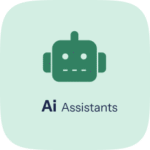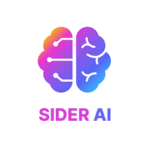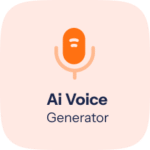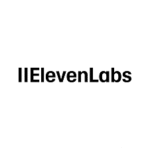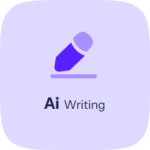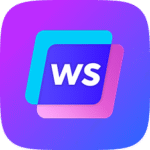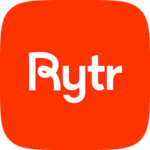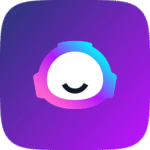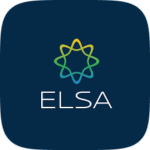Boosting Remote Work Efficiency with Smart AI Productivity Tools
Remote work has become a permanent part of the modern professional landscape. While it brings undeniable flexibility, it also introduces productivity challenges: endless meetings, scattered communication, and fatigue from juggling too many tools. That’s where AI productivity tools make a real difference. By intelligently automating routine tasks and enhancing team collaboration, these tools help remote teams stay focused, organized, and efficient. Whether you’re a solo freelancer, part of a lean startup, or embedded in a large organization, leveraging the right AI-powered solutions can significantly boost your workflow. In this comprehensive guide, we’ll explore the best AI tools for remote workers, how to implement them effectively, and what to watch out for — including where to buy ChatGPT cheap for advanced chatbot functionality. Ready to level up your digital workspace? Let’s dive in.
Which AI Tools Elevate Remote Work the Most?
The best AI tools don’t just automate—they think alongside you. Here’s a breakdown of key categories and standout tools helping remote teams work smarter.
How Can AI Help with Task Management & Scheduling?
Coordinating tasks across remote teams and time zones can quickly get overwhelming. AI-driven task managers streamline planning, prioritize intelligently, and minimize manual input with time-blocking suggestions.
- Motion: Merges calendars and task lists, using AI to optimize daily schedules automatically.
- ClickUp AI: Enhances productivity by suggesting task updates and content improvements in real-time.
- Clockwise: Protects focus time by rebalancing shared calendars intelligently.
Pro Tip: Look for scheduling tools that offer seamless calendar syncing and predictive prioritization.
What AI Tools Improve Remote Communication?
Successful remote teams rely on clear, timely communication. AI-enhanced tools help by transcribing calls, summarizing messages, suggesting responses, and even translating conversations live.
- Otter.ai: Real-time meeting transcription with automatic summaries — ideal for async teams.
- Krisp: Uses voice intelligence to remove background noise during calls.
- GrammarlyGO: Provides smart writing suggestions tailored for business communication.
Which AI Assistants Handle Admin Tasks Best?
AI assistants are digital helpers that take care of your inbox, manage reminders, organize your calendar, and even handle basic travel logistics—freeing up time for higher-value work.
- Reclaim.ai: Automates scheduling, habits, and task prioritization throughout your day.
- Superhuman AI: Manages email with smart prioritization and suggested replies.
- Buy ChatGPT with crypto: Tap into advanced chatbot tools for content, coding, and support—at scale and at a lower cost.
Key Benefits of AI for Remote Work
- AI-powered planners reduce time spent on scheduling and task switching.
- Communication tools prevent information loss and reduce misunderstandings.
- Virtual assistants eliminate repetitive administrative work.
Case Study: Slashing Meeting Time at BrightHive
BrightHive, a remote marketing team, reduced weekly meetings by 70% after adding Motion for smart calendar coordination and Otter.ai for transcription. Their asynchronous communication through AI summaries led to 25% faster project delivery and a 33% boost in team satisfaction.
Comparison Table: Best AI Tools for Distributed Teams
| Tool | Key Features | Pricing | Pros |
|---|---|---|---|
| Otter.ai | Live transcription, automatic summaries | Free / $8.33/mo | Saves time, ideal for asynchronous work |
| Motion | AI-driven task and calendar planning | $19/mo | Improves time-blocking and prioritization |
| ClickUp AI | Workflow automation, smart writing | $5+/mo | Scalable for teams, intuitive UX |
Common Pitfalls When Using AI Tools (And How to Avoid Them)
Adopting AI tools can backfire when not done strategically. Here are mistakes to watch for:
- Over-automation: AI should support—not fully replace—human input.
- Lack of training: Ensure your team knows how to use tools effectively.
- Tool overload: Consolidate platforms to avoid duplication and fatigue.
- Ignoring privacy: Verify compliance and data processing policies before rolling out.
Actionable Insights
- Use human-AI collaboration as the default setup for best results.
- Upskill team members regularly with purposeful training.
- Vet all tools for GDPR or SOC 2 compliance, especially for client data.
Ploonad: Your Hub for Affordable AI Workflows
If you’re looking to adopt AI without breaking the bank, Ploonad offers tailored AI solutions including ChatGPT accounts, automation tools, and affordable crypto payment plans. It’s ideal for teams seeking flexible productivity tools with real ROI.
What’s Next? Emerging Trends in AI for Remote Work
AI isn’t standing still. Here’s what’s on the horizon for forward-thinking teams:
- Dynamic workspaces: AI that adapts workflows to personal productivity rhythms.
- Composable toolkits: Mix-and-match AI components built around team needs.
- AR integration with AI: Real-time augmented environments to support immersive work.
According to McKinsey, AI-driven innovations could increase global productivity by 1.4% annually. Staying ahead requires continuous learning and adaptation.
By the Numbers
- 79% of remote professionals say AI tools increase their output. (Harvard Business Review)
- AI saves professionals an average of 2.5 hours daily. (OpenAI Research)
Debunking AI Myths
| Myth | Reality |
|---|---|
| AI will replace remote workers | AI complements your work by handling routine tasks—creativity and strategy still need humans. |
| AI tools are only for big companies | Many tools offer free versions or budget plans suitable for individuals or small teams. |
| It’s hard to integrate new AI tools | Most AI platforms offer plug-and-play integration with Slack, Zoom, Trello, and more. |
Success Stories: Real Impact of AI in Remote Work
James L., Product Manager: “AI scheduling helped me regain 5 hours weekly—it’s like having a digital assistant.”
Sara D., Freelance Designer: “Thanks to Ploonad’s ChatGPT access, I doubled my creative output in two weeks.”
RemoteDev Co.: “Using ClickUp AI and Otter, we improved sprint completion by 28% without hiring extra PMs.”
Pro Recommendations from Experts
- Seek AI tools that target your biggest bottlenecks.
- Eliminate redundancy by regularly reviewing your software stack.
- Integrate AI into your team’s workflow—not as a separate process.
- Invest time in team-wide onboarding to ensure coherent usage.
- Start small, measure success, then scale up where results show.
Quick Start: AI Implementation Checklist
- Pinpoint your top 3 remote work challenges.
- Match AI tools to those pain points, not trends.
- Embed them into platforms you already use (Slack, Zoom, etc.).
- Set weekly reviews to fine-tune automation settings.
- Host team training on benefits and usage basics.
- Track outcomes and iterate every month.
Helpful Resources for Continued Learning
- Zapier AI Directory: Curated list by workflow type.
- Book: “Work Smarter with AI”: Advanced strategies for AI-augmented work.
- Product Hunt AI Collection: Discover trending AI apps weekly.
- Coursera Course: Learn how to use generative AI in practical settings.
FAQ: Quick Answers on AI for Remote Work
1. What are the top AI tools every remote worker should consider?
Popular picks include Motion, Otter.ai, ClickUp AI, GrammarlyGO, and Reclaim for planning, communication, and workflow automation.
2. Can these tools really boost productivity?
Yes, they automate time-consuming tasks, improve collaboration, and help you focus on high-impact work.
3. Are AI communication tools safe for sensitive data?
Most use secure infrastructure, but always verify their compliance and encryption policies.
4. Do tools like Otter.ai support multiple languages?
Otter mainly supports English. Explore alternatives for multilingual transcription as needed.
5. Will AI replace my job?
No. AI handles grunt work so you can focus on what humans do best—creative thinking and empathy.
6. Best AI for summarizing meetings?
Otter.ai delivers accurate real-time transcripts and shareable summaries—ideal for virtual collaboration.
7. What’s the typical cost range?
Costs vary from free to $50/month. Team plans often offer bulk savings.
8. Where can I get cheap ChatGPT access?
Use Ploonad’s crypto options to access ChatGPT affordably for personal or team use.
9. Can freelancers benefit too?
Absolutely. AI supports content creation, invoicing, scheduling, and research—saving hours each week.
10. What if I’m using too many tools?
Consolidate and audit quarterly. Use integration-friendly platforms to reduce fragmentation.
11. Do AI tools support offline usage?
Some offer partial offline features, but most require internet for full functionality.
12. Are mobile apps available?
Yes, many tools (Otter, ClickUp, Grammarly) offer feature-rich mobile versions.
13. Can real-time team collaboration happen through AI tools?
Yes. Platforms like ClickUp, Slack, and Notion support real-time updates powered by AI.
14. Are these tools hard to learn?
Most offer intuitive interfaces and guided tutorials. Teams can typically onboard in less than a week.
15. Are they customizable to our industry?
Yes. Many tools include templates and AI models that learn your specific context over time.
16. How do I compare AI productivity tools?
Check integrations, user reviews, pricing, support, and specific features through sites like G2 or Capterra.
17. Best AI app for automated scheduling?
Motion and Reclaim.ai stand out for managing team calendars and optimizing daily routines with AI.
18. How do AI writing assistants function?
They use natural language processing to generate, refine, and rewrite content based on inputs like tone and topic.
19. Are small businesses good candidates for AI?
Definitely. AI reduces overhead while helping teams scale capabilities quickly.
20. How can teams use AI in customer support?
AI chatbots and autoresponders offer faster replies, 24/7 support, and reduced support costs.
Conclusion
AI productivity tools are no longer a luxury — they’re a necessity for remote work success. Whether you’re managing projects, communicating across time zones, or just trying to get more done with less, these tools provide powerful support. Start small by identifying your team’s specific needs, implement selectively, and continually optimize your stack. Need help navigating options? Solutions like Ploonad can connect you with affordable, high-impact AI tools. Now’s the time to boost your output, cut distractions, and embrace a smarter way to work. The AI-powered future of work is already here — are you ready?


















